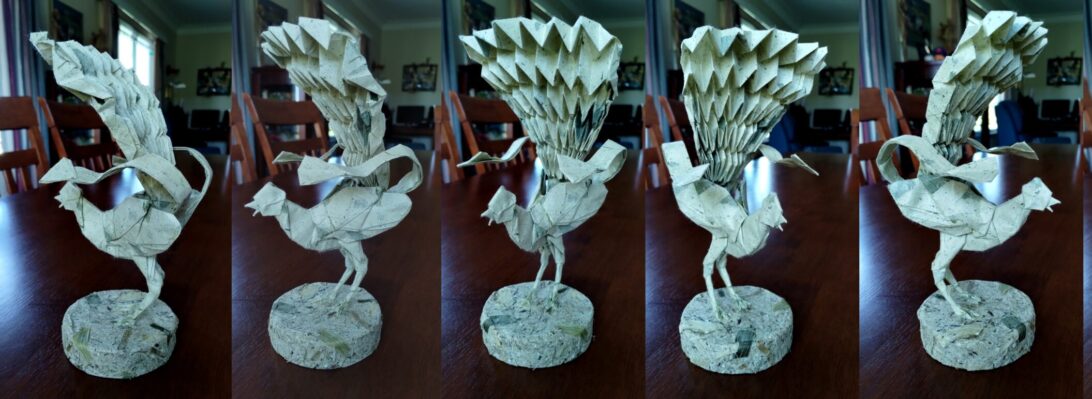When tidying my JOAS Tanteidan Magazines, I discovered a special edition that members used to get – one issue in particular has 2 terrifyingly complicated models I have not (to my surprise) ever tried:

This is Hideo Komatsu’s glorious “Shore Crab”, an amazing but intense design that is described in a fascinating sequence of diagrams. They are involved, number 194, and involved many advanced techniques, and in retrospect I probably looked at it at the time I got it and mentally added it to my “try later” pile.
I started with a 50cm square of crispy Kraft, and adopted my usual fold it until it either fails or finishes.

To my delight, the logical sequence and time to be accurate and careful resulted in a clean fold which I absolutely love. The resultant crab is plucky, has bulk (indeed, most of the paper is folded inside) and is just so anatomically crabby.
It takes great skill to design a model that closely resembles the silhouette of a figurative subject. It takes a special sort of genius in design to ensure that the model looks like the subject all the way around – the underside has all the features of a crab also – just brilliant.
I made a little clear acrylic stand that snugly slots into the crab’s carapace, enabling it to stand up like it is either walking or challenging and, I added some tiny spots of glue to keep seams from gaping all that was necessary to present the fold.
Continue reading













